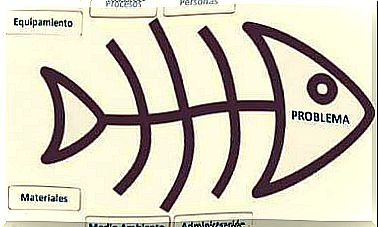Mindfulness Decision Making

Making decisions is often not easy. Doubts or fears arise that make us rethink what is happening in our lives and that somehow put us in a difficult position that requires making a decision to continue or change the path. How do you know the correct path? How to identify the times when we make mistakes? Mindfulness practice can help us.
The latest research in the field of mindfulness indicates that this practice and the many techniques it encompasses can have a very positive effect on decision-making. Making mindful choices is a conscious process in which our attention is focused on the present and we turn off our autopilot, providing many long-term benefits.
No decision making, there is no life
Buddha taught us that suffering originates from ignorance, arising through illusory errors and delusions. If we understand this, let us understand that the mind has its own reality. Therefore, to free the mind from suffering we have to know reality as it really is.
So one of the most powerful tools for developing that deep insight that we need is mindfulness, or mindfulness. It is a practice that helps us become aware moment by moment, that teaches us to pay attention to what is happening, and of course also to focus on how we are feeling in each situation.

Mindfulness helps us to go little by little from the surface to the depths of our mind. Even if our mind is absolutely cloudy, no matter how many clouds there are, this technique helps the light to enter through the cracks.
That’s why they recommend mindfulness so much to improve decision-making, as the technique helps us see more clearly what to do, what we’re capable of, and how to respond appropriately. Of course it’s not easy to be aware, so it takes a lot of practice.
Through conscious breathing we learn systematically to place our attention in the present and to receive whatever comes into our minds without judging, without feeding, without violating ourselves. Training to be mindful is no different from any activity or skill we have learned before, such as cooking, walking, reading, or playing a sport.
In fact, the more practice, the more skill we will have at this task. Little by little, the conscious moments increase in quantity, until we become conscious days, conscious weeks, conscious months, conscious years…
The decisions we make define us
The decision-making process takes place in four phases. In each of them, mindfulness practice proved to be very useful, providing positive effects. Let’s see below.
delimit the indecision
Mindfulness practice helps us to be proactive because it helps us to identify when the decision should be made or, conversely, if it is not necessary at the time. All of this is possible through the search for clarity of our goals, generating possibilities, avoiding the irrational escalation of guilt for previous decisions, as well as recognizing the ethical dimension of the decision that must be taken.
Some studies claim that people who practice mindfulness and take breaks to reflect and listen to themselves are also more aware of their ethical principles. Thus, mindfulness decision making generally generates decisions in line with our values. On the contrary, people who fail to link their decisions to their goals and core values may find themselves going places they don’t want to be going.
collect information
This phase involves searching for the information needed to make the right decision. Two important aspects are the quantity and quality of the information collected. It is already known that by practicing mindfulness we develop a greater tolerance for uncertainty, and this allows us to be more relaxed when making a decision despite the doubts that inevitably arise.
Thus, mindfulness decision-making is an example of recognizing the limits of one’s own knowledge and the breadth of situations, always marked by uncertainty.

Come to a conclusion
On the other hand, mindfulness helps us to examine and quantify the discrepancy between intuition and the systematic analysis we do when making decisions. This involves stepping back from emotions and thoughts to gain a better perspective and more clarity, separating relevant information from irrelevant information, and being less likely to believe stereotypes.
Coming to a conclusion includes implementing a decision. Some studies show that people who practice mindfulness are less likely to be victims within the “behavioral intention gap”. In other words, going through a disconnect between knowing what needs to be done and actually doing it. In this way, mindfulness reduces cognitive rigidity and the tendency to make decisions using automatic thought patterns that will never move out of our minds into the real world.
Accept feedback
This last phase is a very important step in the process. Accepting mistakes can seem very difficult at times. Mindfulness can help us make this a little simpler by reducing our mind’s defensive tendencies, opening it up to negative feedback, and promoting courage and resilience.
In this way, people who are more aware or attentive are more likely to learn from past experiences. In addition, it is easier to disengage from the ego’s clutches by being more open to the mind’s feedback from negative experiences.









